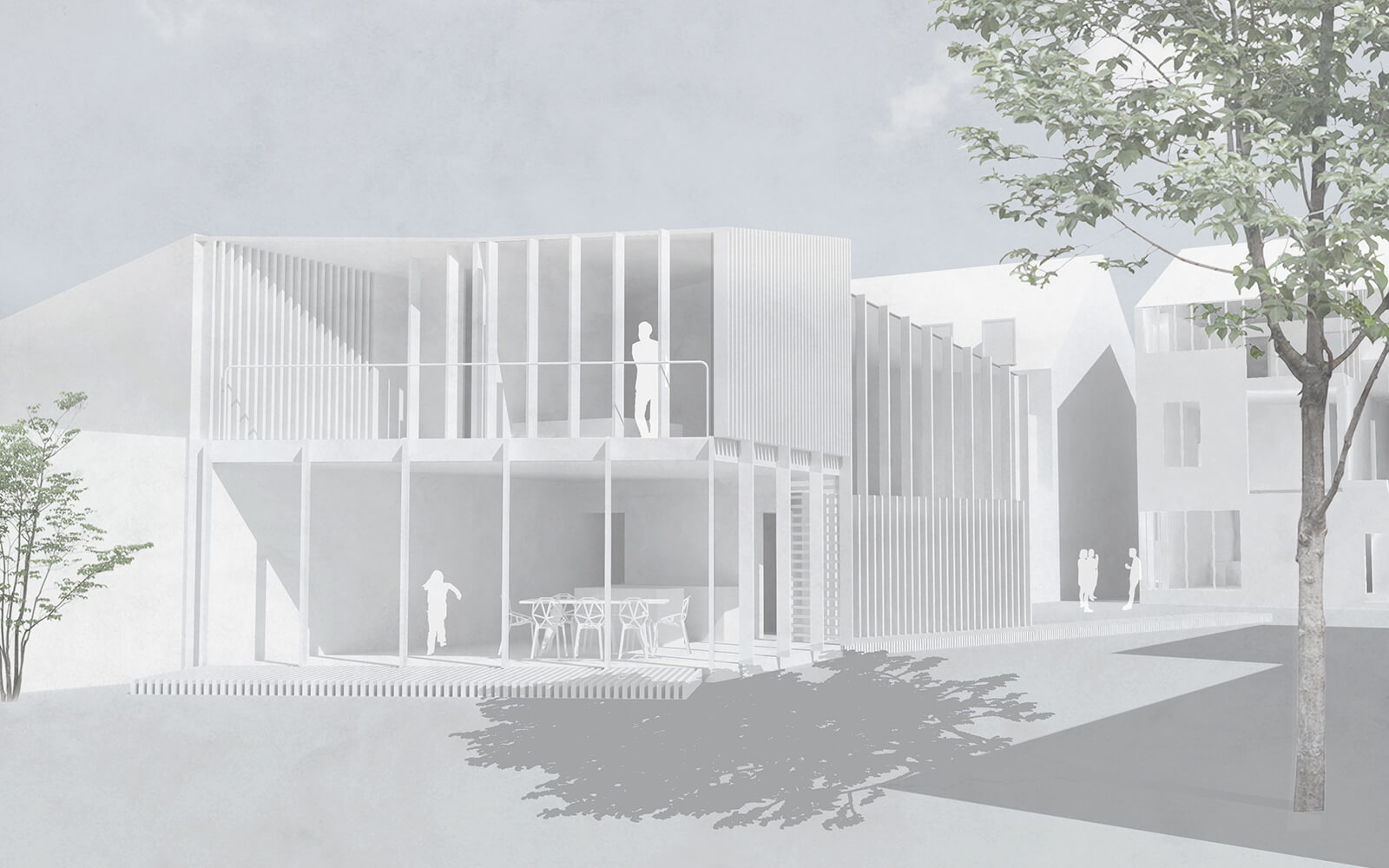
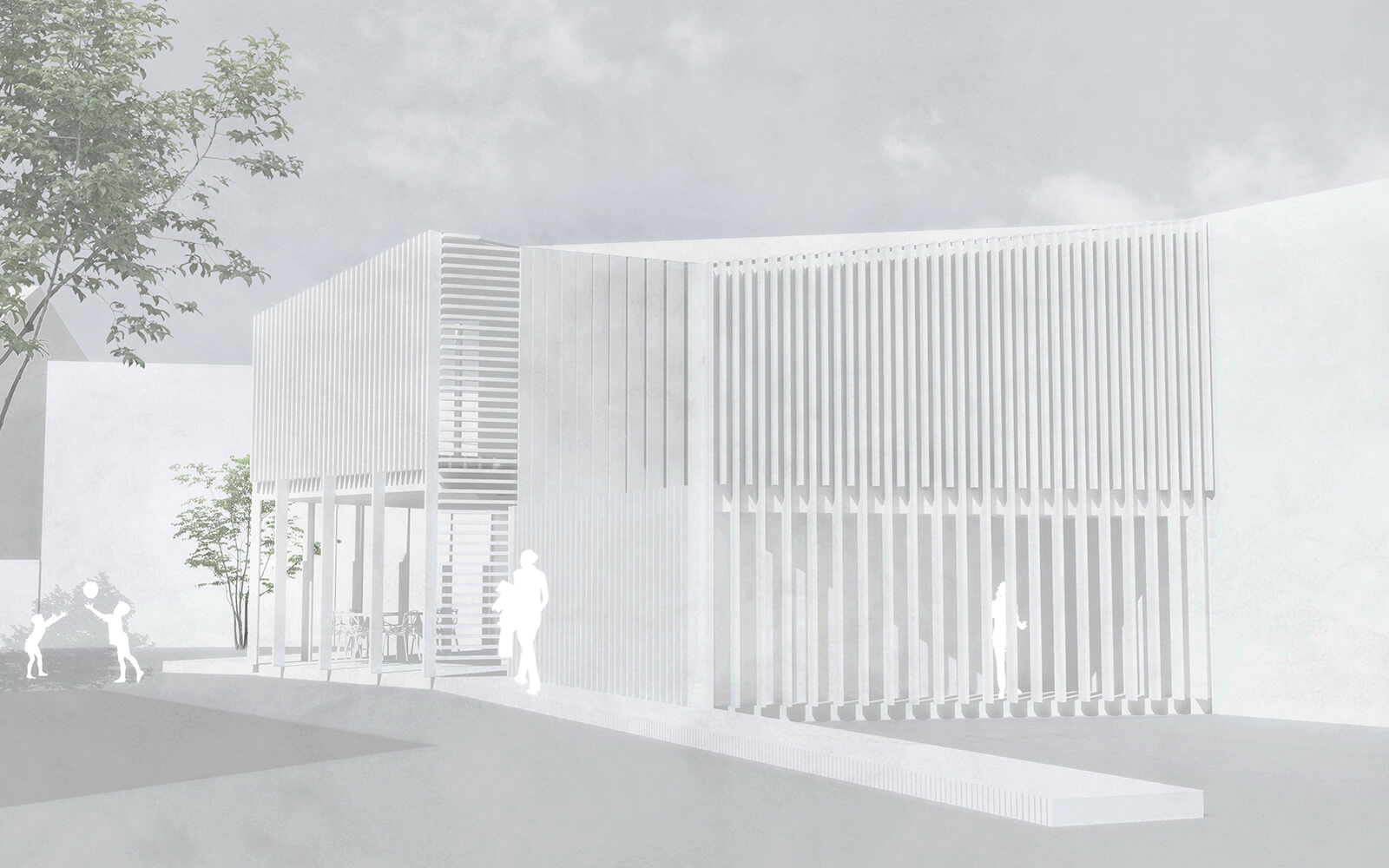
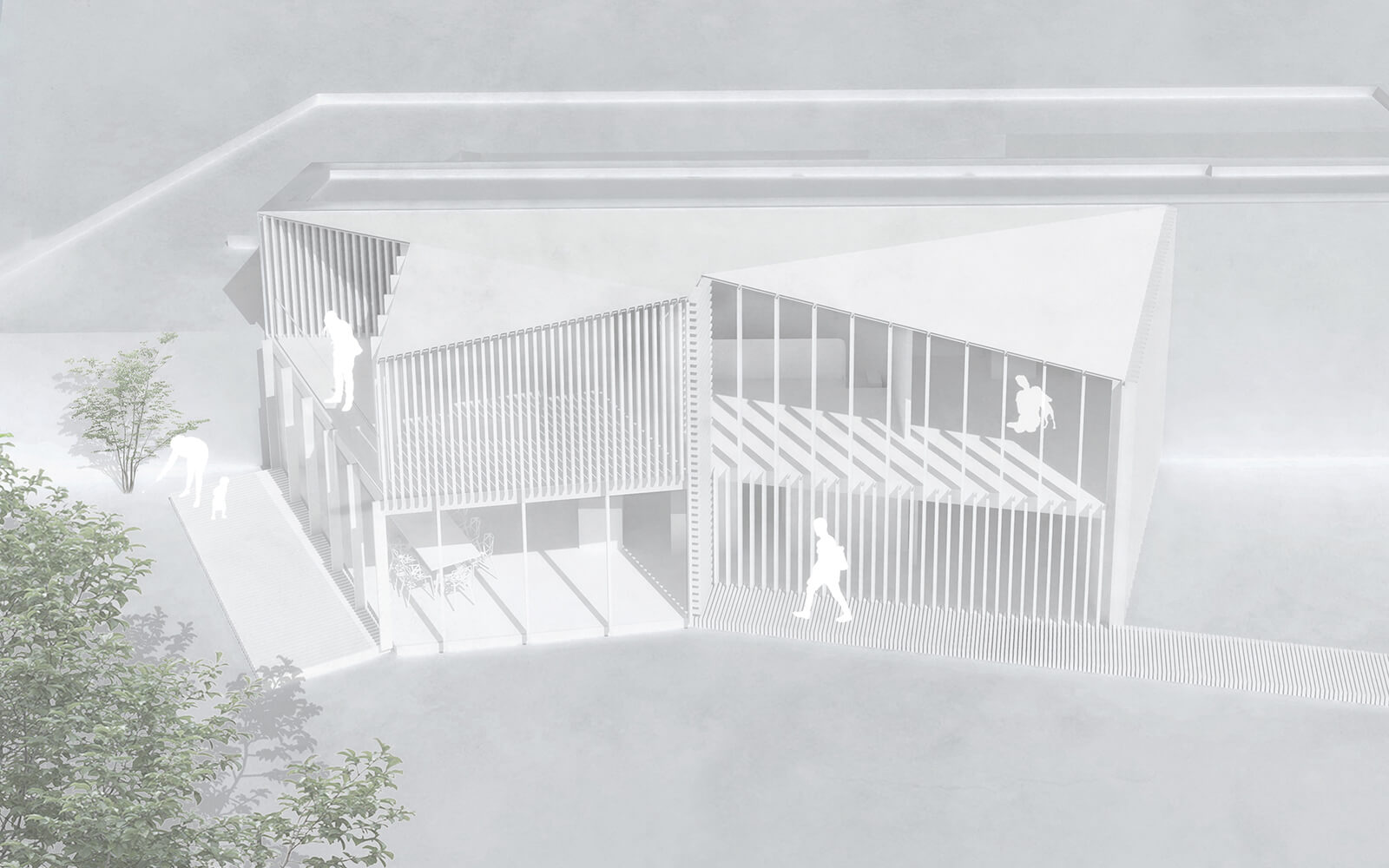
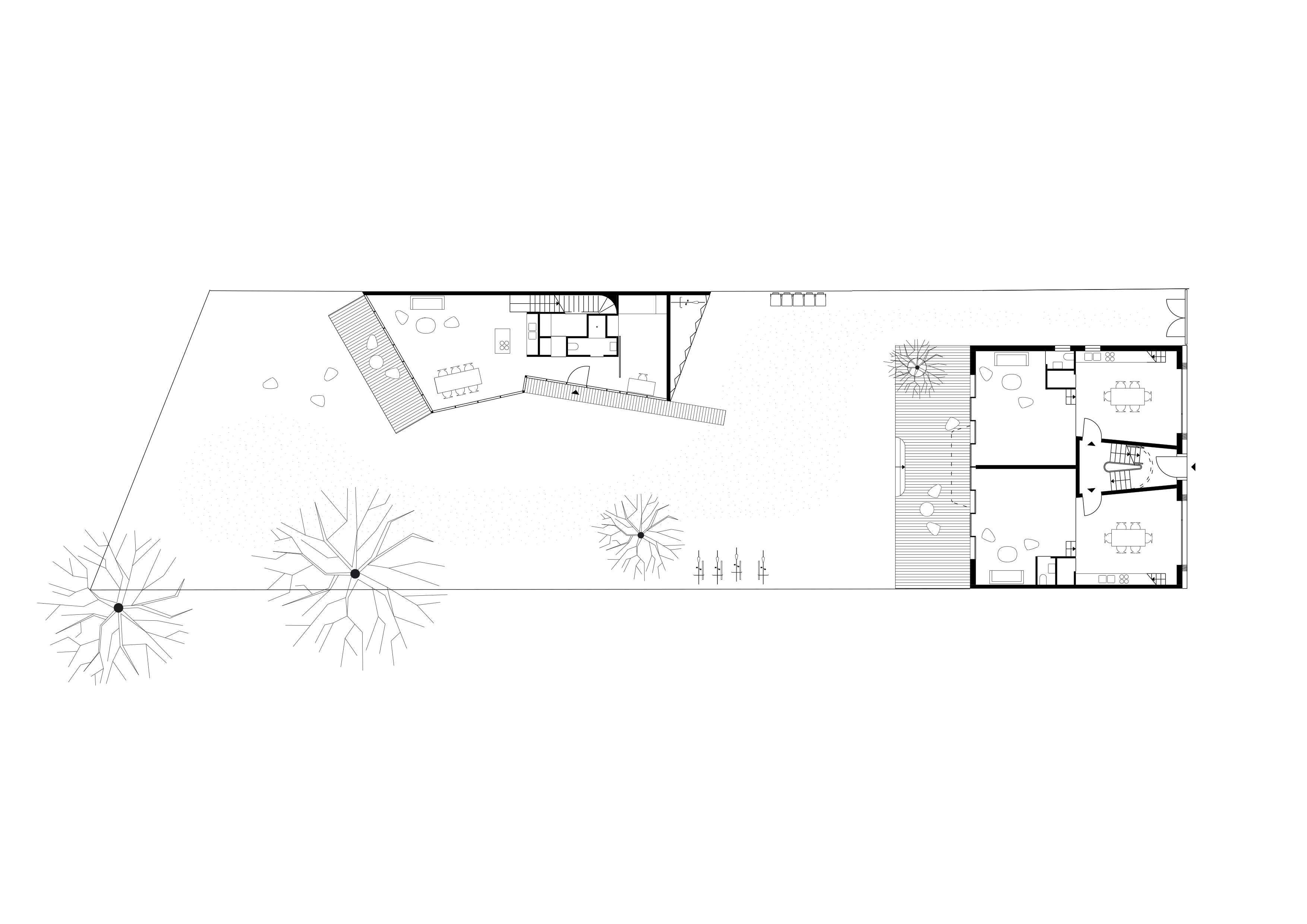
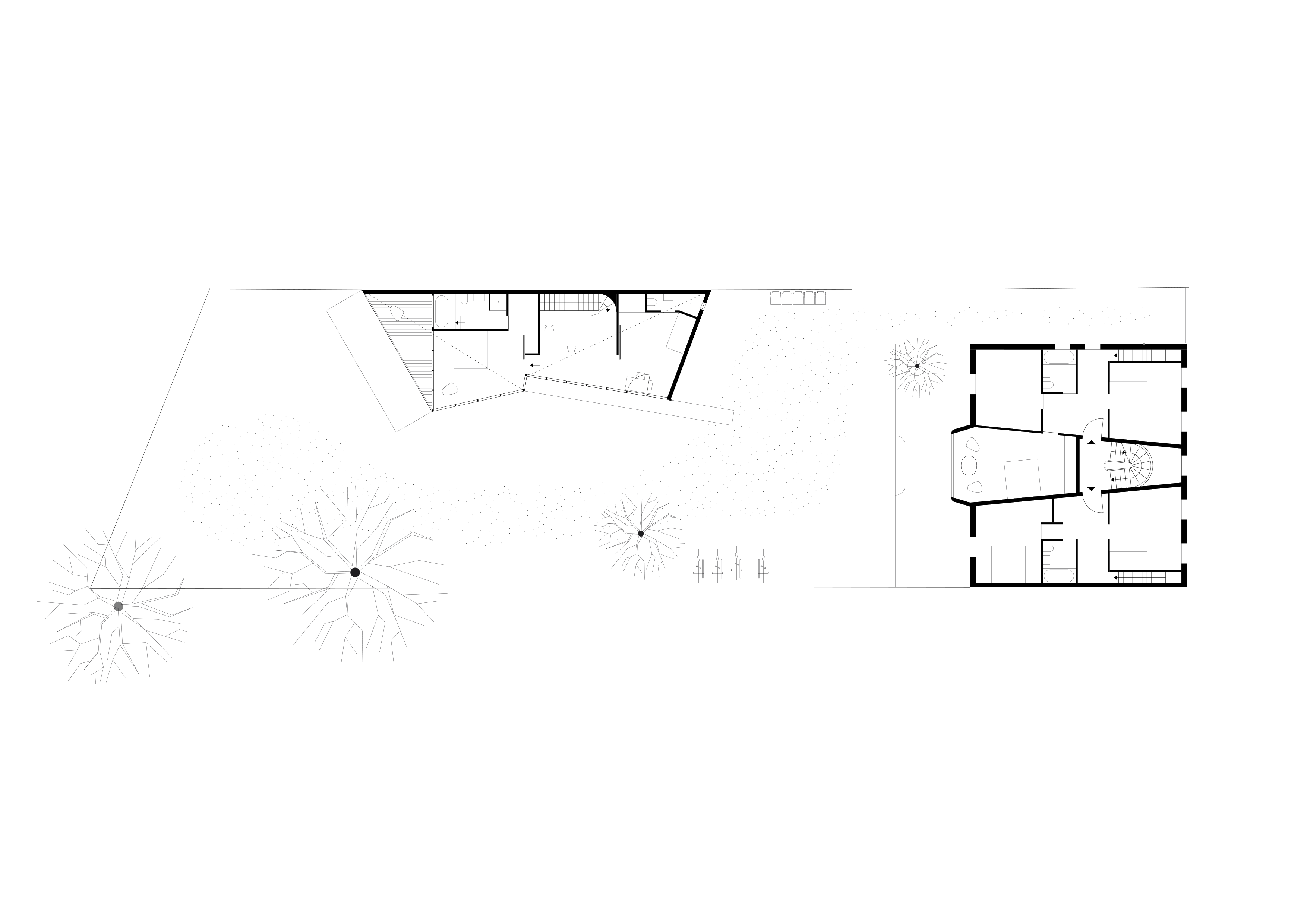
Wohn- und Ateliergebäude, Berlin
Das Grundstück liegt im Süden von Weißensee in einem Gebiet, das im Zuge der städtebaulichen Neuordnung von 1911 eine grundlegende Umwandlung erhielt. Das dörfliche Gefüge sollte einst durch den Entwurf von Stadtbaurat Carl James Bühning in eine städtisch geprägte Struktur überführt werden. Die südlich an die Max-Steinke-Strasse angrenzenden Grundstücke sind schmal und tief, an die Vorderhäuser in geschlossener und halboffener Bauweise schliessen in der Grundstückstiefe kammartige, überwiegend ein- bis zweigeschossige Gebäude an.
Die Planung gliedert sich in ein Bauflucht und Bautiefe der Strassenbebauung aufnehmendes Vorderhaus mit flexiblen Grundrissen und ein Wohn- und Atelierhaus mit einer Nutzungseinheit im rückwärtigen Grundstücksteil. Die einfache Gestaltung der Strassenfassade, mit zwei grosszügigen „Schaufenstern“ nimmt die mögliche Flexibilität der zukünftigen Nutzungen auf und nimmt darüber hinaus bewusst Bezug auf die Gestaltung der Ursprungsbebauung.
Die Kubatur des Gartenhauses kann als Skalierung der auf einem dreieckigen Blockschema aufbauenden städtebaulichen Topologie verstanden werden, gleichzeitig hilft diese Form, je Nutzungsbereich, verschiedene „Privatheiten“ auszubilden.
The plot is located in the south of Weißensee in an area radically transformed by the 1911 urban redevelopment which marked its transition from a rural space to a more urban structure on the basis of a design by the then town councillor for building and construction, Carl James Bühning. The long and narrow properties bordering Max-Steinke-Straße to the south are covered with closed and semi-open front-facing buildings behind which stand, comb-shaped, predominantly single- and two-storey houses at the far end of each plot.
Planning comprises a front building incorporating the existing street-facing development's alignment and depth and offering flexible floor plans, and a single-unit residential and studio house at the back of the plot.
The simple design of the street-facing façade featuring two generously-sized “shop windows” consciously reflects the potential flexibility in the building's future use while also referencing the design of the site's original development.
The back building's cubature may be construed as scaling an urban topology that takes as its basis a triangular block diagram, the shape of which also helps to create several “private spaces” per unit.
Information
Bauherr: privat
Architektenleistungen: LP 1-4
Standort: Berlin-Weissensee
2012 - 2014